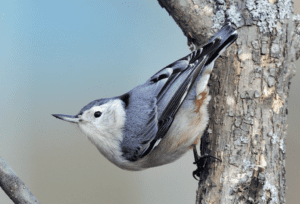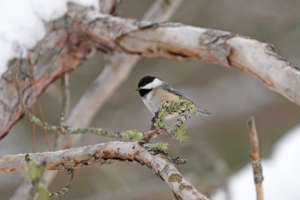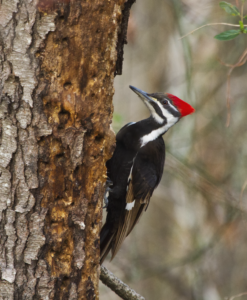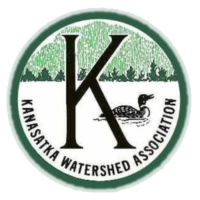
White-breasted Nuthatch, Hadley Massachusetts 2/13/12 Credit: Bill Thompson, U.S. Fish and Wildlife Service
Unfortunately, many bird species are declining at alarming rates. Even species considered common are dropping sharply in number. Breeding bird surveys show population declines ranging from 30 to 77 percent since 1970–and the numbers are still falling.
Habitat loss remains the most significant reason for declining bird populations. Birds have fewer places to safely rest during migration and to raise their young. According to the Cornell Ornithology Lab, “more than 10 million acres of land in the United States were converted to developed land from 1982 to 1997. Lawns and pavement don’t offer enough food or shelter for many birds and other wildlife. With more than 40 million acres of lawn in the U.S. alone, there’s huge potential to support wildlife by replacing lawns with native plantings.” By changing what we plant and how we maintain our yards, we have the ability to make our yards rich habitats for birds.

Black-capped Chickadee 1/25/24. Credit: Courtney Celley, U.S. Fish and Wildlife Service.
Birds play a key role in keeping our ecosystems running smoothly. They eat insect pests that would otherwise decimate crops and gardens. This can help reduce or eliminate the need for pesticide use. Birds disperse seeds to new areas. They scavenge carcasses. Hummingbirds help pollinate plants. Hawks and owls help keep the mouse population in check.
Birds eat millions of mosquitoes and other biting insects. If you are lucky enough to have phoebes nesting nearby in the spring, they will take care of eating many mosquitoes, no pesticides needed. The nectar, seeds and berries of native plants and the insects that live on those plants can provide all the food birds need. Not needing to buy bird seed means you won’t need to worry about bears raiding your feeders!
What’s good for the birds is great for our yards and the Lake too! Leaving the leaves, creating small piles of brush, and leaving dead tree trunks (called snags) standing wherever it is safe are steps that will encourage birds to visit and live in our yards. These same practices also make our yards more absorbent, help manage erosion, and prevent runoff from going into the Lake. Native plants add interest and beauty, while providing food, shelter, and nesting areas for birds.

Pileated woodpecker, 4/11/2013. Credit: Shenandoah National Park, Virginia.
- Creating Landscapes for Bird Diversity—Claudia G. Thompson, founder of Grow Massachusetts
- Link to full YouTube video presentation on Creating Landscapes for Bird Diversity:
- Seven Simple Actions to Help Birds–Cornell Lab of Ornithology
- State of the New Hampshire’s Birds: A Conservation Guide 2020—New Hampshire Audubon
- To Help Birds this Winter, Go Easy on Fall Yard Work—National Audubon Society
- Project Feeder Watch–Cornell Lab of Ornithology
- Project Feeder Watch–Gardening for Birds:
- Project Feeder Watch—Mini Poster
- Native Trees, Shrubs and Vines with Wildlife Value–University of New Hampshire Cooperative Extension
- How to Create a Bird-Friendly Yard—National Audubon Society
- Native and Beneficial Plants—Massachusetts Audubon
